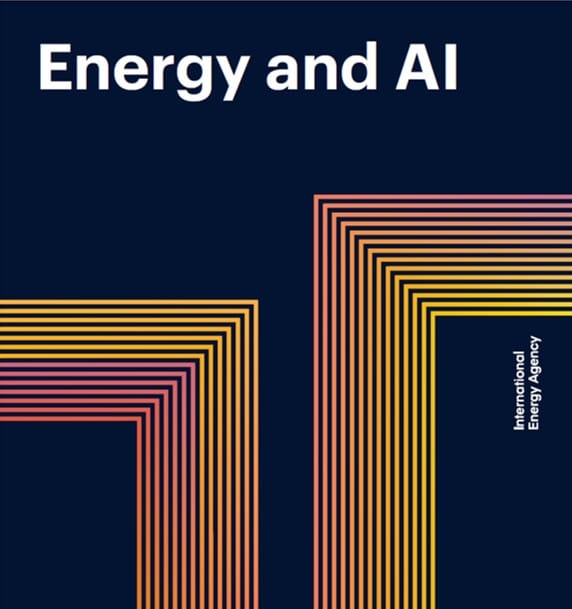Digital Giants and the Race for Net-Zero Data Centers
Data centers are surging in energy and water demand. Can we build truly net-zero facilities? Discover the technologies, policies, and strategies reshaping digital sustainability. Read the full "Toward Net Zero" report now at CleanPowerShift.com.

As data centers become the beating heart of the global economy, a new question looms: can we grow the digital world without burning through the physical one?
In 2023, U.S. data centers consumed approximately 176 terawatt-hours of electricity—about 4.4 percent of the nation’s total demand. That number could triple by 2028, driven largely by the explosive growth of artificial intelligence and hyperscale cloud computing. Once hidden warehouses for corporate IT, data centers now shape how economies function, how societies communicate, and even how AI learns. But at what environmental cost?

A new report from CleanPowerShift.com, Toward Net-Zero: The True Bottom Line on Sustainable Data Centers, examines this crossroads moment in depth. The full report, key findings and insights already sketch a vivid picture: sustainable data centers are no longer a far-off ambition—they are emerging today, reshaping the infrastructure behind the digital world.
Efficiency Gains—But a Growing Appetite
Top operators like Google and Meta have pushed their fleet-wide PUE (Power Usage Effectiveness) down to an impressive 1.10. These gains came from a decade of better airflow management, smarter cooling technologies, and AI-optimized operations. Yet the industry average PUE remains stuck around 1.56. Worse still, efficiency gains of a few percentage points per year are being outpaced by surging demand, with AI workloads growing electricity needs by double digits annually.
Without a major pivot, total U.S. data center electricity demand could spike from today’s 176 TWh to over 500 TWh by 2028—equivalent to the entire energy use of California.
The Water Factor
Water use, a lesser-known side of the data center equation, is rapidly gaining attention. In Virginia’s "Data Center Alley," water consumption from data centers rose by nearly 65 percent between 2019 and 2023. Companies like Microsoft are responding by designing closed-loop cooling systems that avoid evaporative loss, saving up to 125 million liters of water per facility per year. Meanwhile, Google's facilities in places like Finland use seawater to cool servers, bypassing freshwater supplies altogether. Still, the shift from water-intensive evaporative cooling to water-free dry cooling often requires more electricity, setting up difficult engineering trade-offs.
Emerging Technologies and Real Progress
One clear message from the CleanPowerShift report: liquid cooling is moving mainstream. Direct-to-chip cold plates and full server immersion in dielectric fluids can slash cooling energy use by 30 percent or more. Some of the latest designs push PUE values as low as 1.05.
Meanwhile, Microsoft’s experiments with hydrogen fuel cells for backup power and Google's AI-driven dynamic computing load-shifting to match renewable energy availability show the industry's willingness to bet big on frontier solutions. Even waste heat from servers is finding new life: Meta and others are channeling excess heat to warm buildings and greenhouses, particularly in colder regions like Scandinavia.
The Last Mile to Net-Zero
The hardest challenges remain. While companies like Google, Meta, and Microsoft match 100% of their annual consumption with renewable energy credits, no major operator yet achieves 24/7 carbon-free energy use on every grid. Renewable intermittency—days without sun, hours without wind—remains a massive hurdle.
Solutions will demand energy storage at scale, flexible computing that shifts workloads to regions with surplus renewables, and perhaps a rethinking of digital consumption patterns themselves. Otherwise, even efficient data centers could strain fragile power grids, as seen in Northern Virginia and Dublin, Ireland.
Edge computing, meanwhile, , small facilities closer to end users—could complicate the picture. Without strong efficiency standards, thousands of new edge sites could dilute gains made by hyperscale giants.
What Makes a Truly Sustainable Data Center?
The report argues that genuine sustainability goes beyond energy efficiency. It requires a full lifecycle view: minimizing the embodied carbon in cement, steel, and silicon; extending hardware life; reusing or recycling servers; and building modular designs that waste fewer materials.
Metrics like Water Usage Effectiveness (WUE) and Carbon Usage Effectiveness (CUE) are rising alongside PUE as new benchmarks. No longer is it enough for a data center to be "efficient." To claim leadership, it must now be energy-efficient, water-conserving, carbon-neutral, and transparent about its progress.
Policy and Market Forces: A New Chapter
The shift is not happening by accident. State and utility incentives increasingly reward sustainability. Illinois offers tax breaks for LEED-certified data centers. Xcel Energy provides rebates for efficiency upgrades. The Department of Energy’s COOLERCHIPS program funds next-generation cooling research.
Community pushback is also shaping development. In Dublin, new data center connections were paused due to grid strain. In Oregon and other states, policymakers debate whether new facilities should be required to guarantee renewable energy sourcing.
The report emphasizes the economics of sustainability are improving. Renewable electricity is now the cheapest form of new power generation in many regions. And efficient designs that save a percentage point on PUE can shave millions of dollars off annual operating costs.
The Road Ahead
Sustainable, net-zero data centers are not a marketing myth. They are becoming an operational imperative, driven by economics, public pressure, and the physical realities of climate and water constraints.
But vigilance is critical. As buzzwords like "green data center" become ubiquitous, true leadership will be measured not by slogans but by transparent metrics, third-party validations, and real-world impact.
The report concludes with a hopeful message: if the progress of the past decade continues—if innovation, investment, and policy align—the goal of net-zero digital infrastructure by 2030–2040 is not just possible. It is probable.





Comments ()